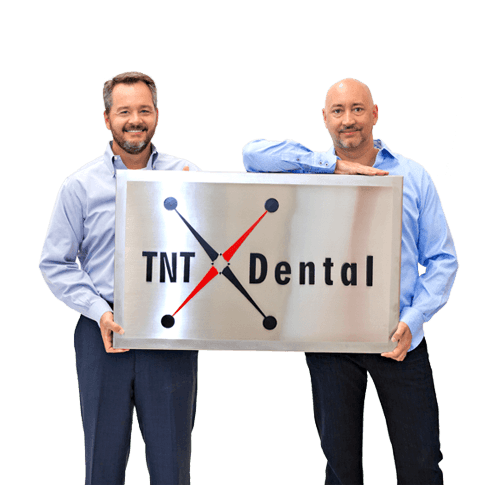By Kyle Francis, President and Founder Professional Transition Strategies
To many, the dental practice transition process seems daunting, but it doesn’t need to be. This is mainly because practice owners often don’t know where to start or how the practice’s value is determined, among other essential factors.
Whether you’re ready to begin planning your transition strategy or you want to learn more about your options, it’s important to understand what impacts the sale of your dental practice. Here are the top five things to consider before you sell your dental practice.
 Start with the facts
Start with the facts
Selling your dental practice is a huge step in your professional career. That’s why you need all the information available to make the best decision for you and your staff. First, you need to understand the fair market value of your practice for both an individual buyer and a group, as this can vary based on a range of factors.
Next, you need to learn about the different transition strategies and determine which scenario is best for you. The most common transitions are a(n):
- Buy-out: Purchasers buy a practice within a relatively short time period. On average, this takes about three months and is the quickest transition route.
- Buy-in: A specific buyer purchases a defined portion of the dental practice. This is a longer-term approach that can expand the value of your practice over time.
- Associate to buy-in: A group of associates will court a potential buyer to purchase over a period of time. This process ensures compatibility and a smooth transition to map out the future of the practice. Division of power is the biggest decision that needs to be made with this method. While this is the longest approach – taking at least five years – it’s also the most flexible
- Associateship: You can sell to associates while maintaining full control. In this method, not everything is agreed upon up front, which is why this transition option has about a 20% success rate; however, it can be profitable under the right circumstances.
- Merger: Two existing dental practices combine into one entity and owners often stay on as equal partners after merging. Mergers offer great benefits like the net income remaining constant or even increasing because there is no loss of business.
- Roll-up: You purchase multiple dental practices and combine them under one entity to maximize economies of scale. This can boost the value of your practice when it’s time to sell. A roll-up transition is the most lucrative if you have the time and capital to dedicate to this plan.
- Affiliation: You sell the majority of your business to another entity, typically a dental service organization (DSO), with the intent to slowly transition out of the practice and give up clinical control to the group. This is an excellent way to maximize the practice’s value.
 Proper planning prevents poor performance
Proper planning prevents poor performance
Whenever I chat with dentists about transitions, I always recommend starting the planning process as early as possible – even up to ten years before you plan on selling.
You should start considering your options sooner rather than later because it gives you ample time to identify and make changes to your practice that can improve the valuation. These can range from amping up your marketing to increasing production and even upgrading technology to increase profitability.
Another reason to start planning your transition early is because you can be more discerning with the offers that you receive. When you’re in a pinch to sell your practice, it can result in taking one of the first offers and leaving money on the table. Taking your time with the sale puts you in the driver’s seat to evaluate offers and choose the one that’s best for you. A slower approach tends to make your practice more attractive to DSOs if you’re interested in an affiliation transition.
 Don’t change the practice prior to looking to transition
Don’t change the practice prior to looking to transition
The age old adage “if something isn’t broken, don’t fix it” also applies to getting your practice ready for a sale. Maintaining your production is one of the best things you can do to obtain the highest valuation possible for your practice because the financials from the most recent years will weigh the heaviest when determining the practice’s value. Slowing down your production can have a massive impact on the price you can get for the practice.
The same holds true for your practice’s specialty. Gearing up for a transition is not the time to focus on a new niche specialty. By opening the practice up to a new specialty – say, going from a general practice to a periodontics practice – you decrease the potential buyer pool and it can negatively impact your sale options.
 Keep an open mind
Keep an open mind
The world of dental transitions has changed drastically. There are more transition strategies available now than 30 years ago. Bringing on an associate to hopefully buy your practice one day is not the only option. Keep an open mind to the different possibilities. It’ll ensure you choose a transition strategy that is perfect for you and your practice.
As outlined earlier, there are a multitude of options out there and you’ll find one that fits your needs. Maybe you want to start the transition process early by choosing an affiliation option and selling to a DSO years before you choose to retire. Or maybe you’re ready to get out of the business and want a buy-out option that’ll be quick so you can move into your next phase of life.
 Be realistic
Be realistic
When it’s time to sell, banks and other financial investors will look at the current and recent history of the practice. They’re not going to lend based on the practice’s potential. While potential definitely makes the practice more attractive, it won’t impact the fair market value of the practice. In this case, sprucing up your practice or investing in more quality equipment can make your practice more desirable and potentially increase the value a bit; however, it will never be one for one in terms of getting your money back on that recent expense.
With more exit strategy options than ever before, this is an exciting time in the dental transition industry. Now, dentists have more control over the outcome of selling their dental practice and can take advantage of strategies that weren’t previously feasible. When it’s your time to start planning your transition, be sure to prepare by gathering all the facts so you can make the decision that’s right for you.


